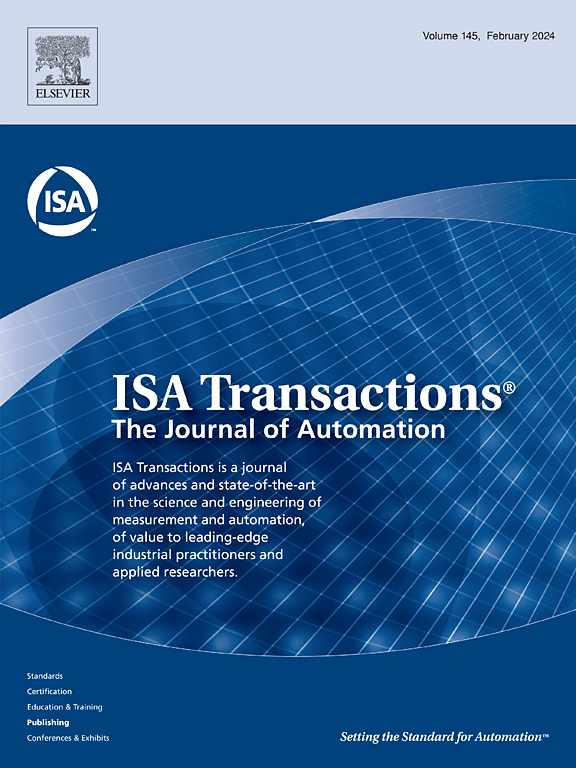Remaining useful life prognostic for degrading systems with age- and state-dependent jump-diffusion processes
IF 6.3
2区 计算机科学
Q1 AUTOMATION & CONTROL SYSTEMS
引用次数: 0
Abstract
The prediction of the remaining useful life (RUL) holds significant importance within the field of prognostics and health management (PHM), which may provide lifetime information about the system. The foundation for effectively estimating RUL is constructing an applicable degradation model for the system. However, the majority of existing degradation models only consider the issue of age dependence and disregard state dependence. In addition, variations to the system’s operating environment will cause degradation state jumps, which will impact degradation paths and the precision of RUL estimation. Nevertheless, existing studies have only accounted for some of the influencing factors, neglecting to simultaneously consider age dependence, state dependence, and jumps. To account for both age-state dependent (ASD) and jump, a generalized age-state dependent jump-diffusion (ASDJD) model is proposed for RUL estimation in this paper. Approximate analytic expressions for the RUL distribution are derived based on first hitting time (FHT). Expectation conditional maximization (ECM) and maximum likelihood estimate (MLE) are used to estimate the model’s unknown parameters. The simulation dataset and the Xi’an Jiaotong University bearing dataset validate the proposed model, demonstrating that state dependence and jumps should be considered in the RUL estimation process.
具有年龄和状态依赖跳跃扩散过程的退化系统的剩余使用寿命预测。
剩余使用寿命(RUL)的预测在预测和健康管理(PHM)领域具有重要意义,它可以提供有关系统的生命周期信息。有效地估计RUL的基础是建立一个适用于系统的退化模型。然而,现有的退化模型大多只考虑了年龄依赖问题,而忽略了状态依赖问题。此外,系统运行环境的变化会导致退化状态的跳跃,这将影响退化路径和RUL估计的精度。然而,现有的研究只考虑了一些影响因素,而忽略了同时考虑年龄依赖、状态依赖和跳跃。为了同时考虑年龄状态依赖(ASD)和跳跃,本文提出了一个广义年龄状态依赖跳跃-扩散(ASDJD)模型用于RUL估计。基于首次命中时间,导出了RUL分布的近似解析表达式。利用期望条件最大化(ECM)和最大似然估计(MLE)对模型的未知参数进行估计。仿真数据集和西安交通大学轴承数据集验证了所提出的模型,表明在RUL估计过程中应考虑状态依赖和跳跃。
本文章由计算机程序翻译,如有差异,请以英文原文为准。
求助全文
约1分钟内获得全文
求助全文
来源期刊

ISA transactions
工程技术-工程:综合
CiteScore
11.70
自引率
12.30%
发文量
824
审稿时长
4.4 months
期刊介绍:
ISA Transactions serves as a platform for showcasing advancements in measurement and automation, catering to both industrial practitioners and applied researchers. It covers a wide array of topics within measurement, including sensors, signal processing, data analysis, and fault detection, supported by techniques such as artificial intelligence and communication systems. Automation topics encompass control strategies, modelling, system reliability, and maintenance, alongside optimization and human-machine interaction. The journal targets research and development professionals in control systems, process instrumentation, and automation from academia and industry.
 求助内容:
求助内容: 应助结果提醒方式:
应助结果提醒方式:


